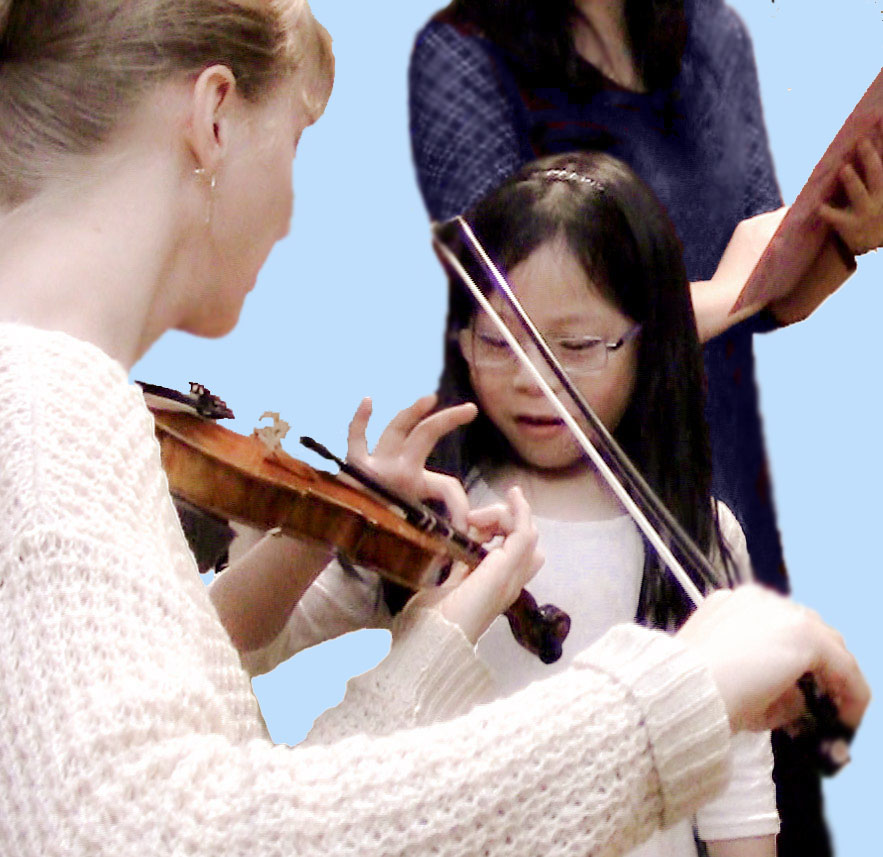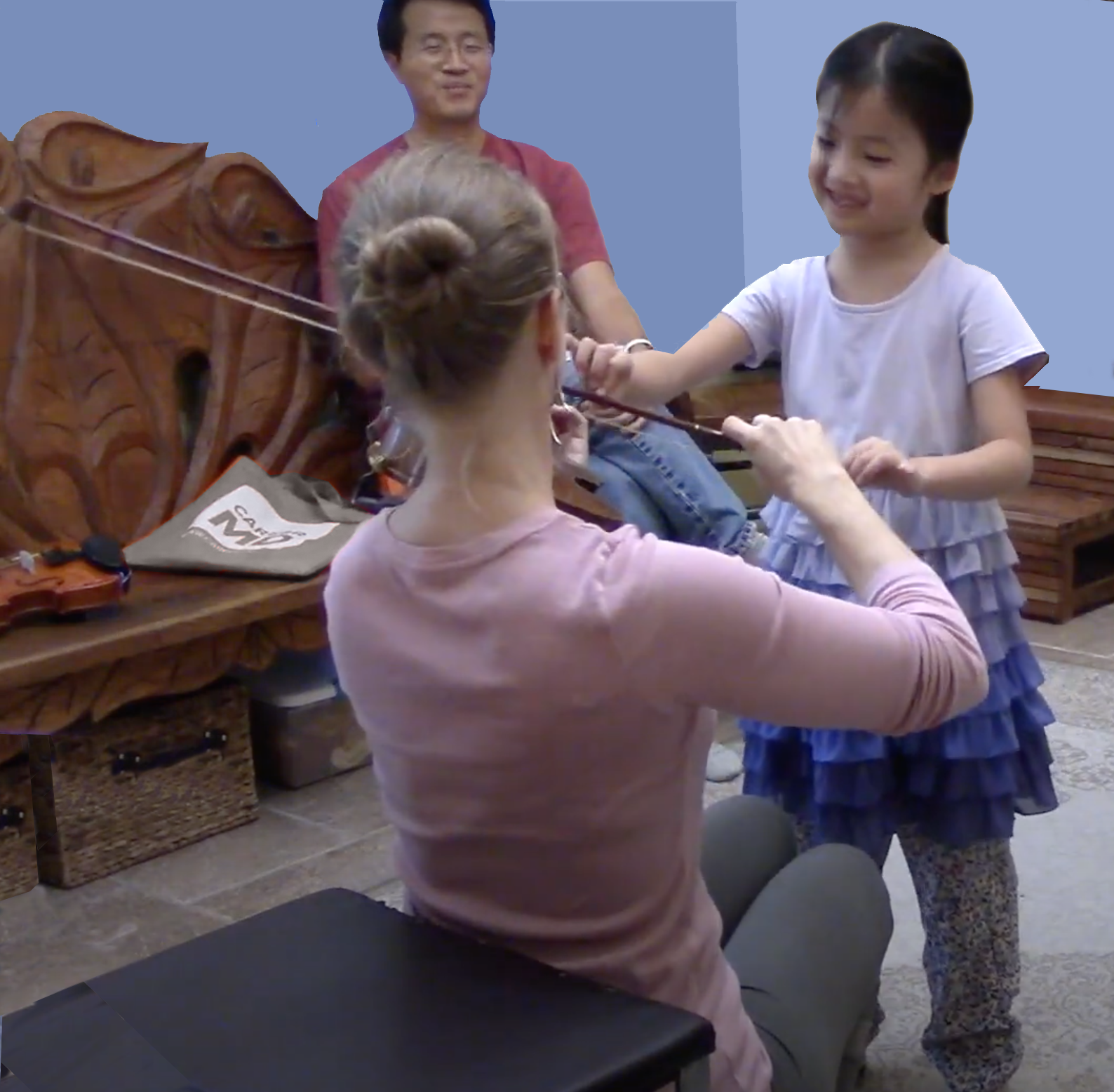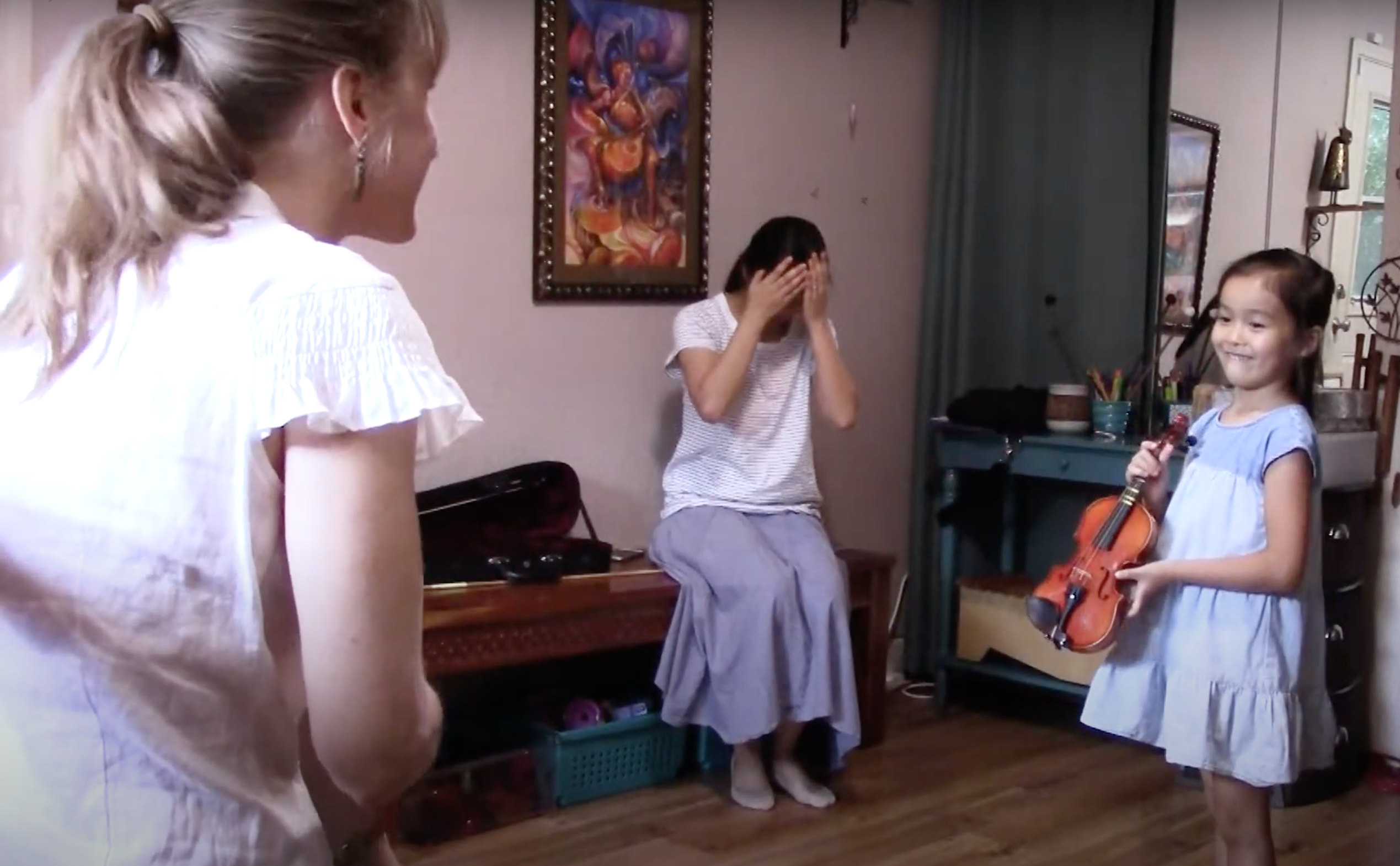Teaching Young Children
This article is a transcript of a tutorial video recorded in 2015, updated and edited for clarity. The original video is linked below.
If you’ve never worked with young kids before, you may be feeling some trepidation about it.
That’s totally fine.
Just like anything else, working with children is a skill that can be learned.
My first real experience with being around a lot of young children was actually my boyfriend’s family. Interacting with them was way outside of my comfort zone at the time … especially because my boyfriend was so good at it. He had no problem being goofy, fun, and playful. He wasn’t afraid to get down on the floor with them, play make-believe, etc.
In contrast, I was more reserved. It was hard for me to let my guard down, and I was afraid of looking silly in front of other adults.
“The first time I decided to take that risk, there was something very freeing about it.”
One day I decided to take the risk. I honestly don’t remember exactly what gave me the courage. Maybe for a moment, the other adults were distracted and it was just me and the 5-year-old.
But what I do remember is the unexpected discovery I made as I played make-believe for the first time in twenty years:
I still remembered how to play.
And even more surprising … I discovered that I enjoyed it.
Playing Versus Teaching
As a teacher, you don’t have to be a kid. The way you’ll be interacting with students will be more adult-to-adult.
But you do have to be willing to get into their world. The way that a child’s mind works is not the same way that an adult’s mind works. You need to let your imagination go and just be with them, be willing to follow their flight of fancy when the moment arises.
Don’t worry about losing track of your adult priorities like fixing their posture or structuring a lesson. You’ll figure out balance moments of imaginative fantasy with whatever teaching point it is that you need to deliver.
How to Talk to a Child
One of the mistakes that adults make when they’re not comfortable interacting with young children is being artificial, overly smiley, or baby-talking. That’s not helpful because kids can easily detect when someone’s being fake with them.
However, the opposite is equally unhelpful. You can’t talk to a young child the way that you would talk to an adult. They’ve only been speaking English for three or four years! They’re incredibly intelligent; they just don’t have the same vocabulary or worldly experience as someone two decades older.
So, do change register when you speak to a young child. Do be playful, gentle, and warm. But … be real with them. Relate to them as you would anyone else. Just try to find language that’s on their level.

How Does This Apply to Teaching Violin?
This also applies when explaining concepts that are violin related. For example, if I want to tell them that they’re rushing their quarter notes, I’m not going to use those exact words.
Instead I’ll say, “Listen to these notes. Notice how they sound when I play them? You’re playing them too fast. Can you play them more slowly?”
They won’t learn fraction words (like “quarter” or “half”) until fifth grade. But they can hear that rhythmic relationship. This simpler language achieves the result I want.
By reducing the cognitive load, I’ve allowed them to complete the task more successfully. They feel more emotionally secure because they sense that I am in their world. This makes their lessons more enjoyable … which in turn gives them a more positive feeling about the instrument.
And of course, later, when they’re ready, I can introduce the appropriate terminology.
The Nature of Young Children
One of the reasons that we depend upon a parent to guide the home practice is that young children don’t have a clear idea what the final goal will sound like, much less how to get there.
They are VERY capable of being very detail oriented. But as the teacher we need to communicate the type of detail that we’re seeking in a way that makes sense in their world.
In the beginning, children are often just thrilled to be making whatever sound they’re making on the violin. They don’t have a concept of how it’s supposed to sound, or know how to compare “how it should sound” to “how I sound.” They’re often just delighted to be making noise on the instrument.
Think about it … a young child loves nothing better than to sit in the middle of the floor with a bunch of pots and pans and bang on them!
We can deduce that learning what is a “beautiful” tone on the violin must be developed over time.
“In the beginning, children are just thrilled to be making whatever sound they’re making.”
Finding the Details
So for example, I might focus on not bumping into other strings. They’re going to have to learn what this actually sounds like! They may not consciously notice this bumping sound … and even if they do, they might not realize that eliminating such noises is an important goal.
As another example, if I want them to make a more beautiful, warm sound, I don’t say it that way. Instead, I’ll demonstrate the sound that I don’t want.
In fact, we’ll explore the whole menu of different scratching sounds! — playing on the bridge, on the fingerboard, too light and fast, too heavy and slow.

We’ll notice what each one sounds like, listen with attentive curiosity to all these interesting sounds — “This is the cat scratch sound!” — before finally I’ll share with them, “Here’s the sound that we’re hoping to create.”
Children are capable of being wonderfully perfectionistic in their practice and focusing on whatever detail you want them to notice. They can get really excited about that, actually.
We just have to find a way to explain it in a way they understand.

Step-by-Step Posture Development
Engaging Repertoire
♦ Singable songs with lyrics ♦ Movable DO solfège ♦
♦ Culturally diverse ♦ Encourages independent learning ♦
Kaleidoscopes Book 1 opens a magical world for the beginning violinist. Detailed instructions assist the parent in working at home with their child, and a variety of games and learning activities make sure practicing is enjoyable.
"Many students are able to play a new piece almost every week right from the beginning. This gives the students, parents, and teachers a feeling of progress which is self-motivating and helps to make lessons and practicing a joyful experience."
How Children Communicate
Another aspect of young children that it’s important for teachers to understand is that children don’t communicate through words. They communicate through behavior. So you have to remember that children’s behavior is not good or bad, it’s just communication.
The problem is that it’s not always clear communication. It’s really up to us as teachers or parents to figure out what is being communicated.

“The deepest motivation of children is to achieve belonging or significance. All of their behavior is oriented toward trying to achieve these two desirable states.”
Adlerian psychology states that the deepest motivation of children is to achieve belonging and significance. All of their behavior is oriented toward trying to achieve these two desirable states — or to communicate that there has been a breakdown and they don’t know how to achieve these. As we seek to interpret a child’s behavior, it’s our job to figure out where that breakdown is occurring.
I have to know the child in front of me well enough that when they are suddenly fascinated by that picture frame or want to ask me about every other object in the room, I know (with this particular child, in this particular moment) it’s because they’re scared of starting the new piece that I want them to start. They’re worried that they won’t be able to do it.
Or with another child in another moment, it is because I’ve asked them to play something and they think they might make a mistake.
Managing Anxiety in the Lesson
Sometimes anxiety comes from the actual lesson situation. Perhaps I just said something that felt hard for them. But also, it could be that something happened in the car on the way to the lesson, or something happened during their school day. Maybe they’re just tired.
It’s really up to us in collaboration with their parents to figure out what is actually being communicated. As a teachers or parents, we don’t want to manage the behavior because the behavior is not really where the power is. What we want to respond to is the child’s internal dialogue (which they may our help to express in words).
That’s one of the reasons that a behavior modification system isn’t always helpful. Behavior is only a surface expression of whatever dynamic or discomfort is going on internally. Although a creating incentives for “good” behavior can appear to work, these strategies are not designed to locate the true source of the problem. Underneath the “good” behavior, the fear or anxiety remains.

Once we identify this underlying need, we can have a conversation with the child that will truly make a difference for them. These kinds of conversations will help the child become genuinely emotionally regulated; rather than simply learning to suppress their feelings.
Conclusion & Next Steps
Teaching young children is one of the most rewarding aspects of being a violin teacher. It took me many years to learn how to fluently teach to their level. Part of why I created Kaleidoscopes was to make things easier for other teachers.
The Kaleidoscopes Book 1 Teacher Guide also includes the full details for implementing Kaleidoscopes with your young beginners. The Kaleidoscopes Book 1 Workshop includes a deep dive into the physical and psychological aspects of teaching young children, as well as the concrete steps included in this teaching method. For more information, please visit the “Teacher Training” tab in the main menu.
Please feel free to contact [email protected] with any questions about the Kaleidoscopes curriculum or training. We look forward to hearing from you. Best of wishes in your teaching of young beginners!
